Krishnendu Chakrabarty
Exploration of Low-Power Flexible Stress Monitoring Classifiers for Conformal Wearables
Aug 27, 2025Abstract:Conventional stress monitoring relies on episodic, symptom-focused interventions, missing the need for continuous, accessible, and cost-efficient solutions. State-of-the-art approaches use rigid, silicon-based wearables, which, though capable of multitasking, are not optimized for lightweight, flexible wear, limiting their practicality for continuous monitoring. In contrast, flexible electronics (FE) offer flexibility and low manufacturing costs, enabling real-time stress monitoring circuits. However, implementing complex circuits like machine learning (ML) classifiers in FE is challenging due to integration and power constraints. Previous research has explored flexible biosensors and ADCs, but classifier design for stress detection remains underexplored. This work presents the first comprehensive design space exploration of low-power, flexible stress classifiers. We cover various ML classifiers, feature selection, and neural simplification algorithms, with over 1200 flexible classifiers. To optimize hardware efficiency, fully customized circuits with low-precision arithmetic are designed in each case. Our exploration provides insights into designing real-time stress classifiers that offer higher accuracy than current methods, while being low-cost, conformable, and ensuring low power and compact size.
Defending Against Gradient Inversion Attacks for Biomedical Images via Learnable Data Perturbation
Mar 19, 2025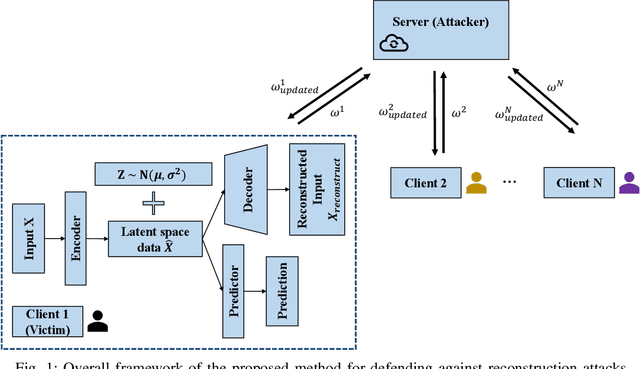
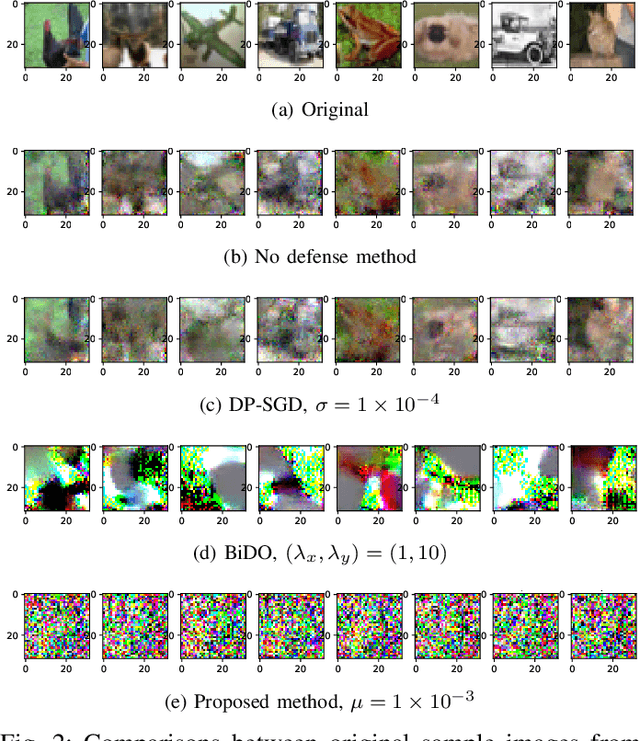
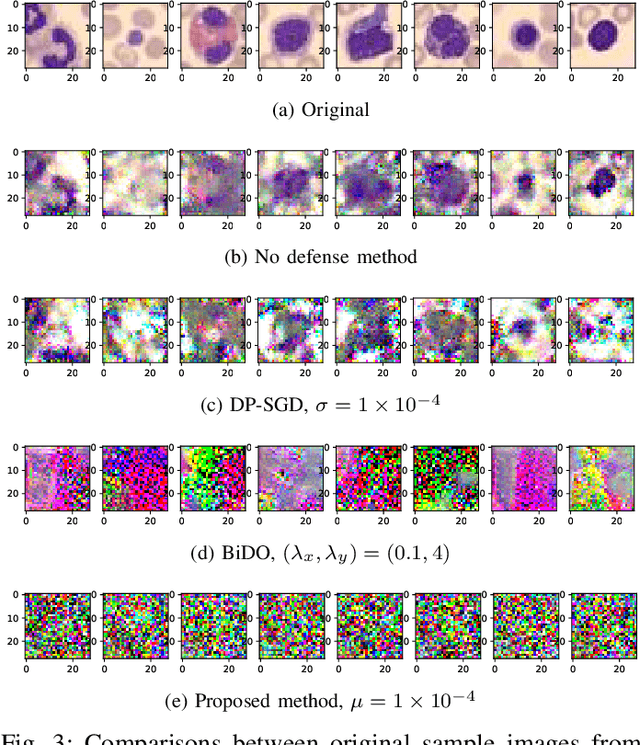
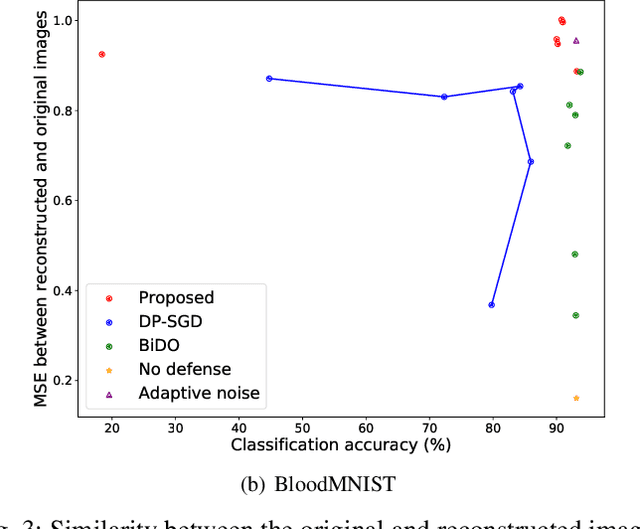
Abstract:The increasing need for sharing healthcare data and collaborating on clinical research has raised privacy concerns. Health information leakage due to malicious attacks can lead to serious problems such as misdiagnoses and patient identification issues. Privacy-preserving machine learning (PPML) and privacy-enhancing technologies, particularly federated learning (FL), have emerged in recent years as innovative solutions to balance privacy protection with data utility; however, they also suffer from inherent privacy vulnerabilities. Gradient inversion attacks constitute major threats to data sharing in federated learning. Researchers have proposed many defenses against gradient inversion attacks. However, current defense methods for healthcare data lack generalizability, i.e., existing solutions may not be applicable to data from a broader range of populations. In addition, most existing defense methods are tested using non-healthcare data, which raises concerns about their applicability to real-world healthcare systems. In this study, we present a defense against gradient inversion attacks in federated learning. We achieve this using latent data perturbation and minimax optimization, utilizing both general and medical image datasets. Our method is compared to two baselines, and the results show that our approach can outperform the baselines with a reduction of 12.5% in the attacker's accuracy in classifying reconstructed images. The proposed method also yields an increase of over 12.4% in Mean Squared Error (MSE) between the original and reconstructed images at the same level of model utility of around 90% client classification accuracy. The results suggest the potential of a generalizable defense for healthcare data.
Monitor Placement for Fault Localization in Deep Neural Network Accelerators
Nov 28, 2023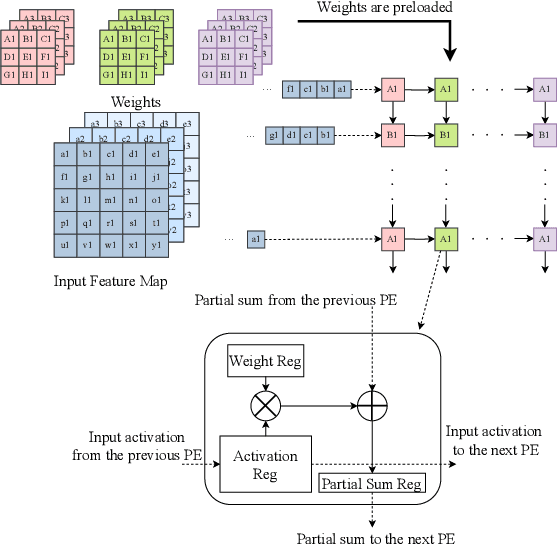
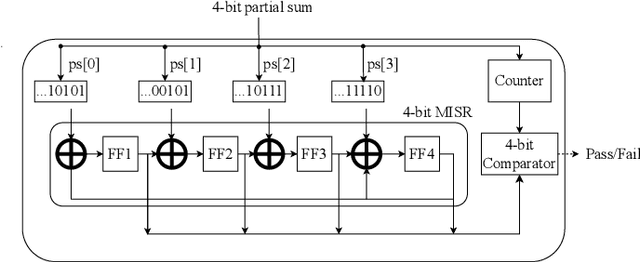
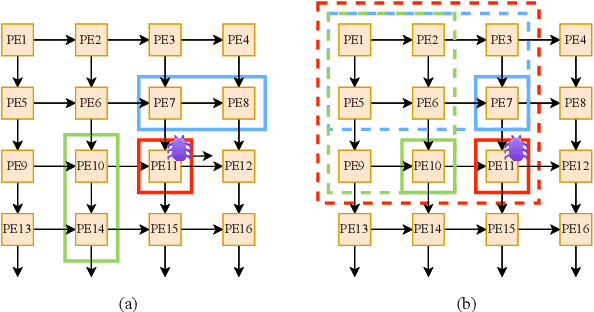
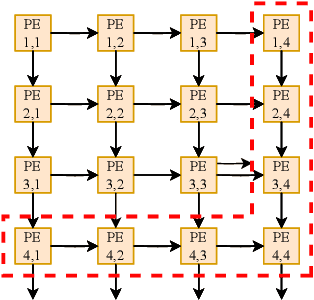
Abstract:Systolic arrays are a prominent choice for deep neural network (DNN) accelerators because they offer parallelism and efficient data reuse. Improving the reliability of DNN accelerators is crucial as hardware faults can degrade the accuracy of DNN inferencing. Systolic arrays make use of a large number of processing elements (PEs) for parallel processing, but when one PE is faulty, the error propagates and affects the outcomes of downstream PEs. Due to the large number of PEs, the cost associated with implementing hardware-based runtime monitoring of every single PE is infeasible. We present a solution to optimize the placement of hardware monitors within systolic arrays. We first prove that $2N-1$ monitors are needed to localize a single faulty PE and we also derive the monitor placement. We show that a second placement optimization problem, which minimizes the set of candidate faulty PEs for a given number of monitors, is NP-hard. Therefore, we propose a heuristic approach to balance the reliability and hardware resource utilization in DNN accelerators when number of monitors is limited. Experimental evaluation shows that to localize a single faulty PE, an area overhead of only 0.33% is incurred for a $256\times 256$ systolic array.
Analysis of Optical Loss and Crosstalk Noise in MZI-based Coherent Photonic Neural Networks
Aug 07, 2023



Abstract:With the continuous increase in the size and complexity of machine learning models, the need for specialized hardware to efficiently run such models is rapidly growing. To address such a need, silicon-photonic-based neural network (SP-NN) accelerators have recently emerged as a promising alternative to electronic accelerators due to their lower latency and higher energy efficiency. Not only can SP-NNs alleviate the fan-in and fan-out problem with linear algebra processors, their operational bandwidth can match that of the photodetection rate (typically 100 GHz), which is at least over an order of magnitude faster than electronic counterparts that are restricted to a clock rate of a few GHz. Unfortunately, the underlying silicon photonic devices in SP-NNs suffer from inherent optical losses and crosstalk noise originating from fabrication imperfections and undesired optical couplings, the impact of which accumulates as the network scales up. Consequently, the inferencing accuracy in an SP-NN can be affected by such inefficiencies -- e.g., can drop to below 10% -- the impact of which is yet to be fully studied. In this paper, we comprehensively model the optical loss and crosstalk noise using a bottom-up approach, from the device to the system level, in coherent SP-NNs built using Mach-Zehnder interferometer (MZI) devices. The proposed models can be applied to any SP-NN architecture with different configurations to analyze the effect of loss and crosstalk. Such an analysis is important where there are inferencing accuracy and scalability requirements to meet when designing an SP-NN. Using the proposed analytical framework, we show a high power penalty and a catastrophic inferencing accuracy drop of up to 84% for SP-NNs of different scales with three known MZI mesh configurations (i.e., Reck, Clements, and Diamond) due to accumulated optical loss and crosstalk noise.
Characterizing Coherent Integrated Photonic Neural Networks under Imperfections
Jul 22, 2022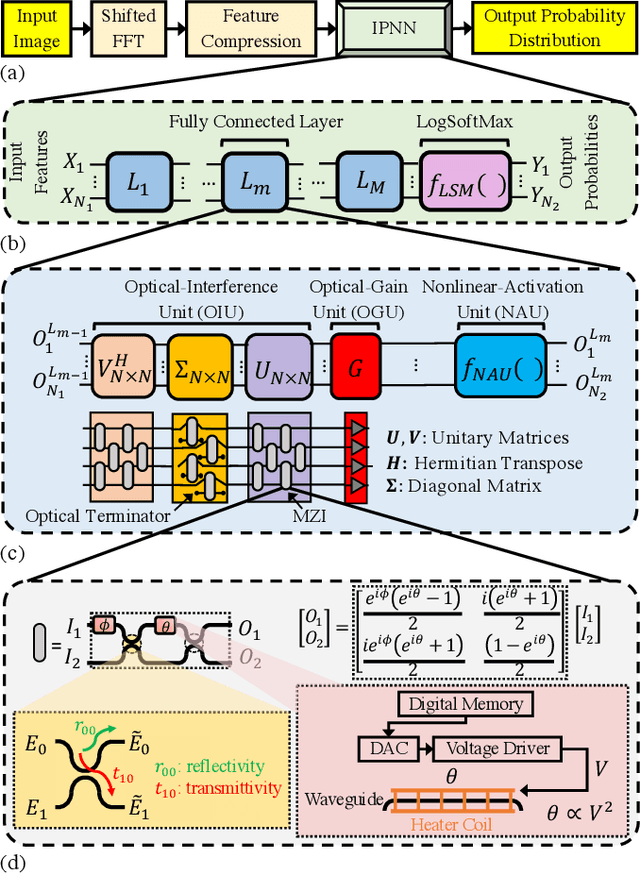
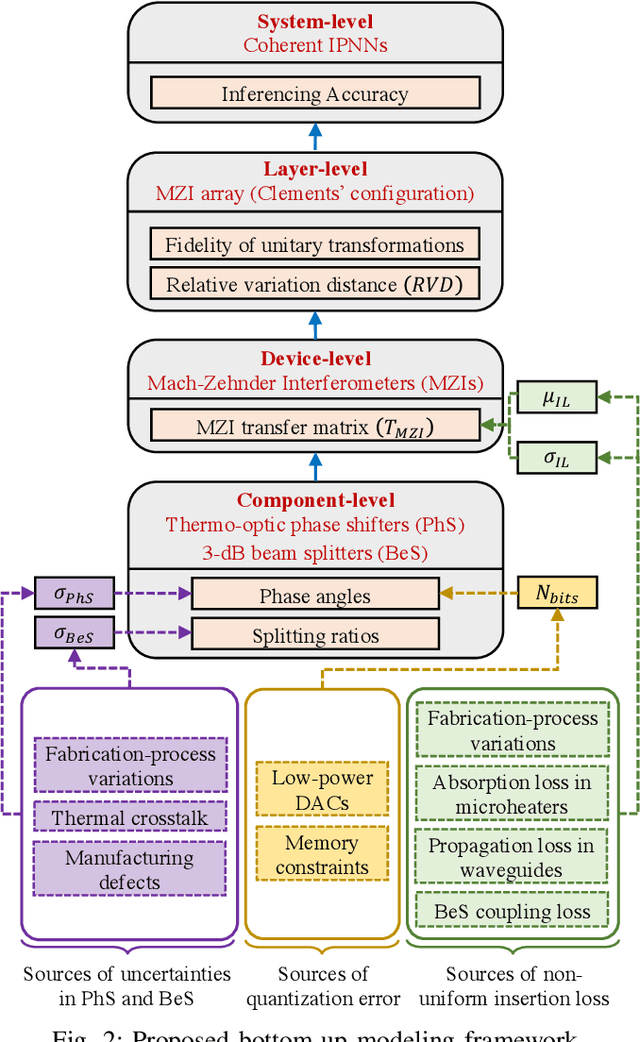
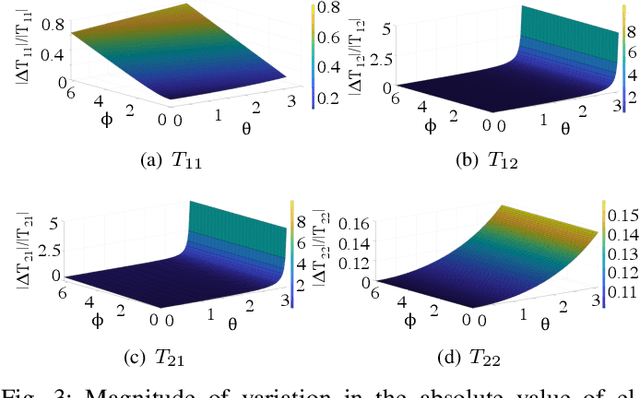
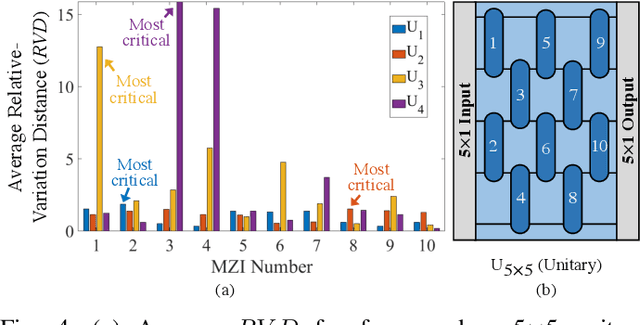
Abstract:Integrated photonic neural networks (IPNNs) are emerging as promising successors to conventional electronic AI accelerators as they offer substantial improvements in computing speed and energy efficiency. In particular, coherent IPNNs use arrays of Mach-Zehnder interferometers (MZIs) for unitary transformations to perform energy-efficient matrix-vector multiplication. However, the underlying MZI devices in IPNNs are susceptible to uncertainties stemming from optical lithographic variations and thermal crosstalk and can experience imprecisions due to non-uniform MZI insertion loss and quantization errors due to low-precision encoding in the tuned phase angles. In this paper, we, for the first time, systematically characterize the impact of such uncertainties and imprecisions (together referred to as imperfections) in IPNNs using a bottom-up approach. We show that their impact on IPNN accuracy can vary widely based on the tuned parameters (e.g., phase angles) of the affected components, their physical location, and the nature and distribution of the imperfections. To improve reliability measures, we identify critical IPNN building blocks that, under imperfections, can lead to catastrophic degradation in the classification accuracy. We show that under multiple simultaneous imperfections, the IPNN inferencing accuracy can degrade by up to 46%, even when the imperfection parameters are restricted within a small range. Our results also indicate that the inferencing accuracy is sensitive to imperfections affecting the MZIs in the linear layers next to the input layer of the IPNN.
Characterization and Optimization of Integrated Silicon-Photonic Neural Networks under Fabrication-Process Variations
Apr 19, 2022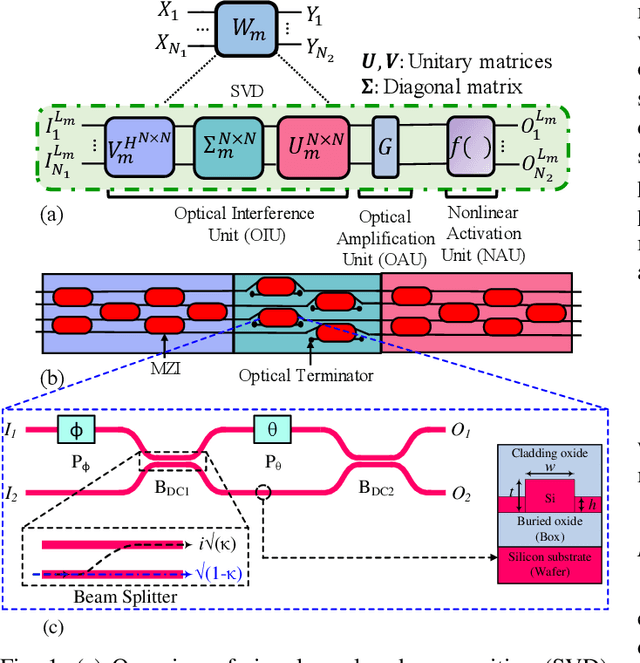

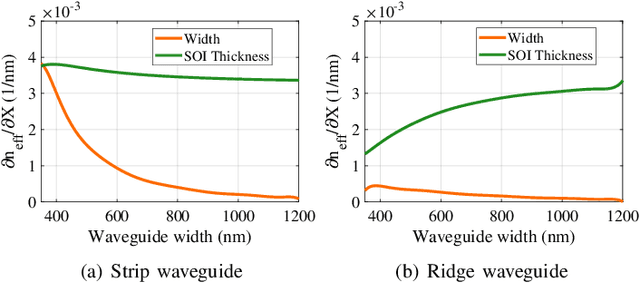

Abstract:Silicon-photonic neural networks (SPNNs) have emerged as promising successors to electronic artificial intelligence (AI) accelerators by offering orders of magnitude lower latency and higher energy efficiency. Nevertheless, the underlying silicon photonic devices in SPNNs are sensitive to inevitable fabrication-process variations (FPVs) stemming from optical lithography imperfections. Consequently, the inferencing accuracy in an SPNN can be highly impacted by FPVs -- e.g., can drop to below 10% -- the impact of which is yet to be fully studied. In this paper, we, for the first time, model and explore the impact of FPVs in the waveguide width and silicon-on-insulator (SOI) thickness in coherent SPNNs that use Mach-Zehnder Interferometers (MZIs). Leveraging such models, we propose a novel variation-aware, design-time optimization solution to improve MZI tolerance to different FPVs in SPNNs. Simulation results for two example SPNNs of different scales under realistic and correlated FPVs indicate that the optimized MZIs can improve the inferencing accuracy by up to 93.95% for the MNIST handwritten digit dataset -- considered as an example in this paper -- which corresponds to a <0.5% accuracy loss compared to the variation-free case. The proposed one-time optimization method imposes low area overhead, and hence is applicable even to resource-constrained designs
LoCI: An Analysis of the Impact of Optical Loss and Crosstalk Noise in Integrated Silicon-Photonic Neural Networks
Apr 08, 2022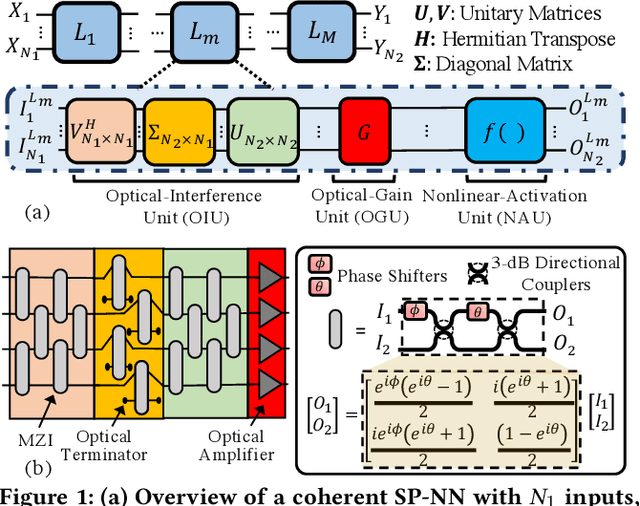
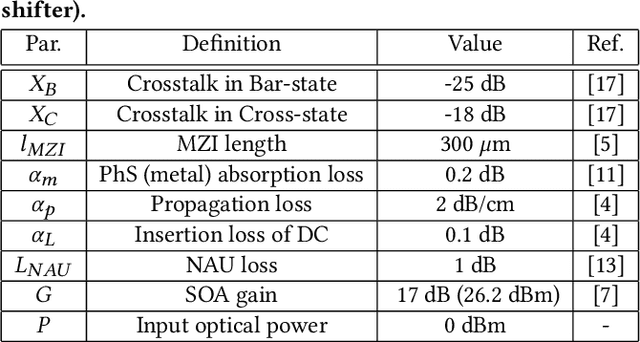
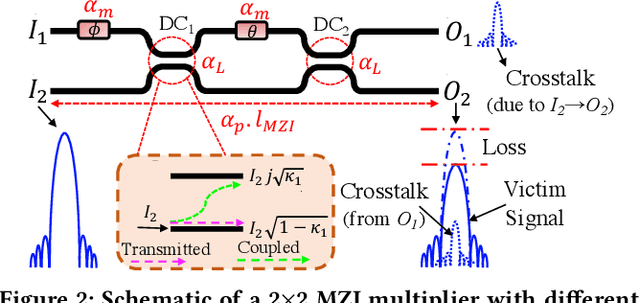

Abstract:Compared to electronic accelerators, integrated silicon-photonic neural networks (SP-NNs) promise higher speed and energy efficiency for emerging artificial-intelligence applications. However, a hitherto overlooked problem in SP-NNs is that the underlying silicon photonic devices suffer from intrinsic optical loss and crosstalk noise, the impact of which accumulates as the network scales up. Leveraging precise device-level models, this paper presents the first comprehensive and systematic optical loss and crosstalk modeling framework for SP-NNs. For an SP-NN case study with two hidden layers and 1380 tunable parameters, we show a catastrophic 84% drop in inferencing accuracy due to optical loss and crosstalk noise.
Pruning Coherent Integrated Photonic Neural Networks Using the Lottery Ticket Hypothesis
Dec 14, 2021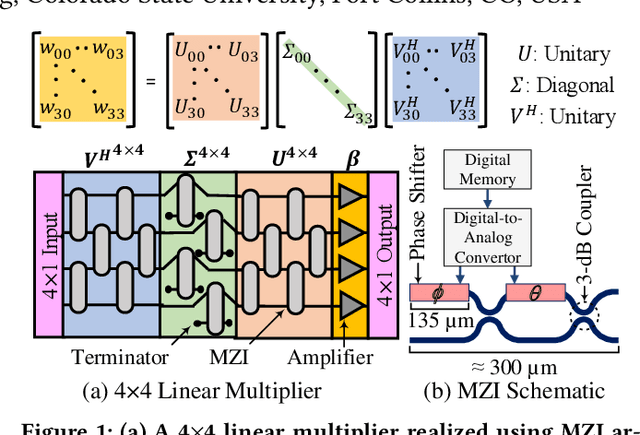
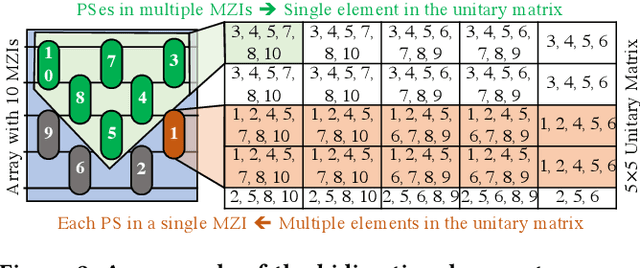
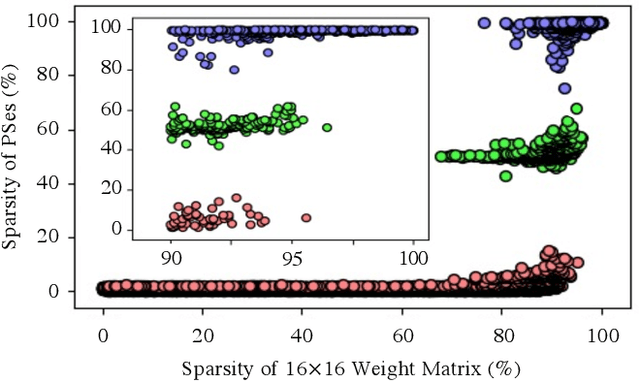
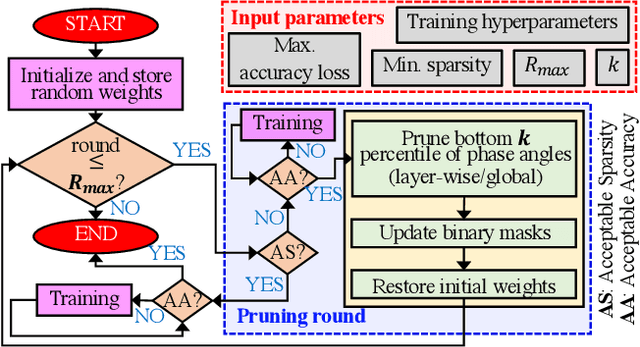
Abstract:Singular-value-decomposition-based coherent integrated photonic neural networks (SC-IPNNs) have a large footprint, suffer from high static power consumption for training and inference, and cannot be pruned using conventional DNN pruning techniques. We leverage the lottery ticket hypothesis to propose the first hardware-aware pruning method for SC-IPNNs that alleviates these challenges by minimizing the number of weight parameters. We prune a multi-layer perceptron-based SC-IPNN and show that up to 89% of the phase angles, which correspond to weight parameters in SC-IPNNs, can be pruned with a negligible accuracy loss (smaller than 5%) while reducing the static power consumption by up to 86%.
CHAMP: Coherent Hardware-Aware Magnitude Pruning of Integrated Photonic Neural Networks
Dec 11, 2021


Abstract:We propose a novel hardware-aware magnitude pruning technique for coherent photonic neural networks. The proposed technique can prune 99.45% of network parameters and reduce the static power consumption by 98.23% with a negligible accuracy loss.
Modeling Silicon-Photonic Neural Networks under Uncertainties
Dec 19, 2020

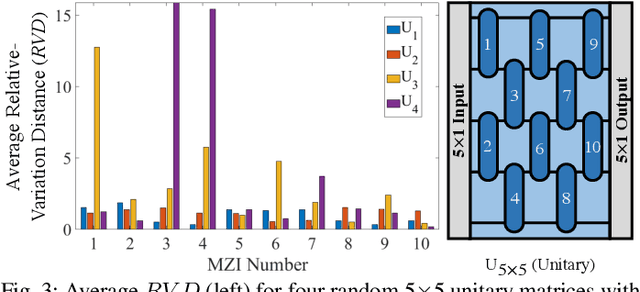
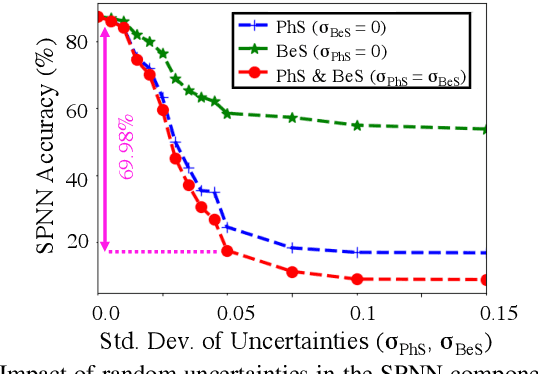
Abstract:Silicon-photonic neural networks (SPNNs) offer substantial improvements in computing speed and energy efficiency compared to their digital electronic counterparts. However, the energy efficiency and accuracy of SPNNs are highly impacted by uncertainties that arise from fabrication-process and thermal variations. In this paper, we present the first comprehensive and hierarchical study on the impact of random uncertainties on the classification accuracy of a Mach-Zehnder Interferometer (MZI)-based SPNN. We show that such impact can vary based on both the location and characteristics (e.g., tuned phase angles) of a non-ideal silicon-photonic device. Simulation results show that in an SPNN with two hidden layers and 1374 tunable-thermal-phase shifters, random uncertainties even in mature fabrication processes can lead to a catastrophic 70% accuracy loss.
 Add to Chrome
Add to Chrome Add to Firefox
Add to Firefox Add to Edge
Add to Edge